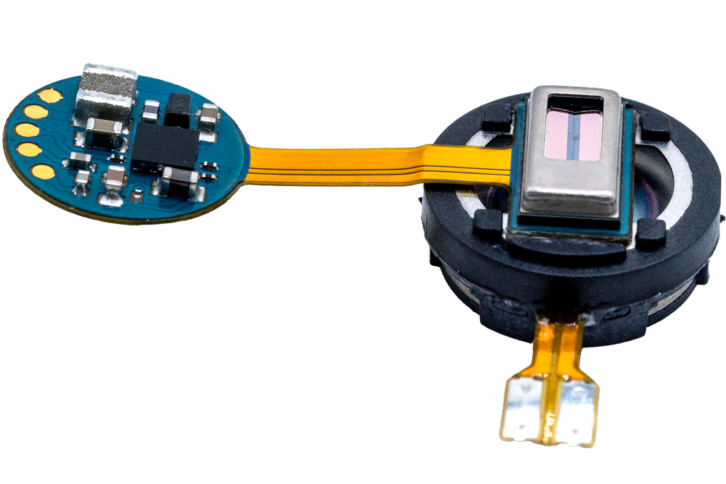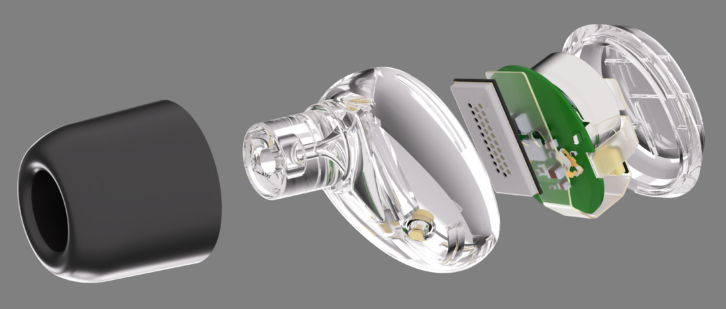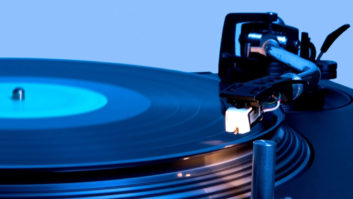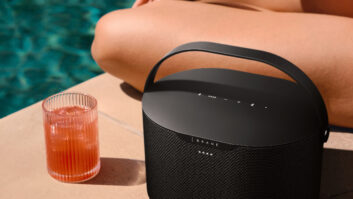
Neil Young was on to something when he showed David Letterman a PonoPlayer. It was 2012 and the legendary singer-songwriter was down on compressed, “lossy” MP3 audio. He wanted to create a platform that would play lossless, high-resolution (hi-res) music that was true to the original recordings. Not only was he backing hi-res digital content, but he had the hardware to play it faithfully. A device engineered specifically for the task. The hardware, he knew, mattered greatly to the experience.
And Young was focused on the digital playback chain. He couldn’t yet imagine the possibilities of a new speaker technology.
In the years since, however, the move toward widespread adoption of hi-res audio has been driven by software—new streaming services, and new audio formats. That’s a mistake, like putting a cart before a horse. The PonoPlayer never took off, but still, it is innovative hardware, in conjunction with software, that will ultimately deliver lossless, hi-res audio experiences to the masses.
The fact is, few people can tell the difference between today’s standard digital music and the hi-res music that companies are selling at a premium. Unless that is, they listen to hi-res music through hi-res hardware. Specifically, through hi-res speakers.
How We Got Here

When music delivery went digital in the 1990s, consumers chose convenience (MP3) over audio quality. Who can blame them? They could quickly download albums; load them on small, portable players; and listen through a bewildering choice of mobile devices, eventually including little wireless speakers and versatile, untethered earphones.
Never mind that the digital files had to be compressed in order to travel across the internet, be stored efficiently on devices, and beamed wirelessly to earphones. Yes, streaming audio helped solve the storage issue, but not the fact that compressing digital music for any mode of consumption means losing much of the detail—the sounds, nuances, instruments—that artists painstakingly engineer into their recordings.
But some noticed the difference. Neil Young noticed. And now, many others are noticing, too. There’s a fresh thirst for high-quality audio. According to Qualcomm’s 2023 State of Sound report, 70 percent of today’s consumers say they’re seeking higher than MP3-quality audio, up from 61 percent the year before. And there are other signs of momentum toward high quality.
Recently, sales of vinyl records have outstripped CDs. Observers say some of the shift is due to nostalgia and consumers’ love for the “warm” sound associated with vinyl. But some are vinyl’s ability to convey more musical detail. As an analog media, there’s no digital sampling required for vinyl, a process that diminishes the original sound. (Young was once quoted as saying, “Steve Jobs was a digital pioneer, but when he went home, he listened to vinyl.”)
To join the call for quality with the convenience of digital media, the industry has arrived at hi-res audio, digital content that’s sampled at a much higher rate to maintain fidelity and at a far greater bit depth to capture more detail. The problem is consumers listen to hi-res audio through speakers—standalone and built-into earphones—that simply can’t keep up. They can’t accurately render the hi-res content the way it’s meant to be enjoyed because they’re designed the same way speakers have been designed for a century.
Hearing the Difference Between Hi-Res and Regular Audio
This disconnect between content and delivery mechanism harkens back to the dawn of high-definition video. When HD content became available, plus applications and services that could play it for consumers, it mattered little because early users were trying to watch HD on non-HD TVs. More recently, when companies like Amazon first promoted a catalog of ultra-high-definition (4K) video content, most people could only watch it on regular HD TVs, thereby missing out on all the visual detail those 4K pixels could display.

The same is happening now with hi-res audio. Ever since music services from Amazon, Apple, and startups like Tidal started offering hi-res audio—sometimes for more money than their standard services—the public has wondered whether it was worth the premium. Researchers even ventured to determine whether the average consumer could tell the difference between regular and high-res music, finding “there was a small but statistically significant ability to discriminate between standard quality audio and high-resolution audio.”
Indeed, it’s been estimated that only about 5 percent of consumers can hear the difference. But what if they listened to hi-res music through speakers that could more faithfully render it? Signs are, most would be able to hear the detail they’ve been missing.
The vast majority of music listening is done through headphones and earbuds. At a 2015 conference of the Audio Engineering Society, it was even reported that 85 percent of people listening to music in their homes, as opposed to on-the-go, did so using headphones. The miniaturized speakers in all those headphones are based on a legacy architecture that includes coils, magnets, and plastic diaphragms. Not only is that architecture not high-performance enough to render high-sample-rate, high-resolution audio, but it’s also not stable enough to do so reliably and faithfully.
In order to universally perceive hi-res audio, it should be played through solid-state, silicon-based micro speakers, designed specifically for the desired fidelity.
Solid-State Speakers are Designed for Hi-Res

Such solid-state audio components are nothing new. The transition began in about 2007, when microphones designed as solid-state, micro-electromechanical systems (MEMS) commanded just 5 percent of the that market. By 2022, that share was 72 percent. Engineers at xMEMS are leading a similar transition for the speaker component.
By using a thin-film piezo technology (material that converts electrical energy to mechanical) as the speaker actuator, replacing the coil and magnet, plus silicon as the speaker diaphragm, replacing commonly used plastic or paper, xMEMS engineers have created a first-of-its-kind, solid-state speaker on a chip at a fraction of the size and weight of similar coil speakers.
Solid-state speakers have several key characteristics that make them uniquely capable of rendering hi-res music. For starters, they’re mechanically faster than coil speakers, with a response rate 150 times that of legacy architectures. This is critical to being able to render high bit rates so listeners can actually hear the enhanced detail, clarity, and instrument separation of the original recording.
They also minimize phase shifts, which are the result of combining different sound waves of varying amplitudes. This alters the audio. Legacy speaker architectures are prone to phase shifts of 180 degrees, effectively “colorizing” the sound and making it less natural. Solid-state speakers are capable of a flat phase—no more than 2 degrees—creating an honest reproduction of the original audio.

Also, because solid-state speakers are manufactured via a semiconductor process, they exhibit phase consistency from speaker to speaker. When you put one solid-state speaker in a left earbud and another in the right, their phases are perfectly matched for maximum clarity.
Finally, solid-state speakers don’t suffer speaker breakup, a distortion that happens when speaker diaphragms are pushed to their limits. Silicon diaphragms are 95 times stiffer than their paper or plastic predecessors and therefore hold their shape better to produce clear, detailed sound. To enjoy the clarity of hi-res content, it’s important to listen through speakers designed for clarity.
Ultimately, xMEMS engineers found that solid-state, hi-res speakers can improve perceived audio quality, based on feedback from hundreds of listeners of xMEMS-based earbuds. The evidence suggests at least 80 percent of people could detect details in their favorite songs they had not previously noticed when listening through earbuds with legacy coil speakers. And while their design characteristics are ideal for getting the most from hi-res audio, solid-state speakers can also improve the experience of standard music, as well as emerging formats, such as spatial audio.
Neil Young said he wanted to “rescue the art form that I’ve been practicing for the past 50 years.” What he didn’t know at the time was that speaker innovation would hold the key. Demanding better-sounding content was a beginning. Solid-state speakers mark the nirvana.
See also: Creative Technology And xMEMS Labs Partner To Elevate Hi-Fi TWS Earbuds













